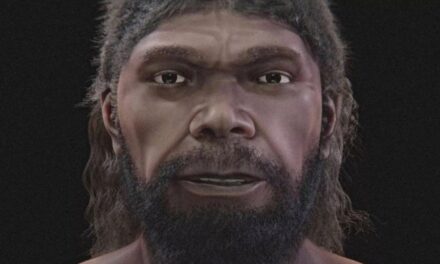Renowned sculptor, Christian Corbet, used a 3D model based on scans of the pharaoh’s skull to create an accurate depiction of Tutankhamun.
Corbet’s work has been celebrated over the years having previously sculpted Prince Philip back in 2013. His most recent creation of the boy king is said to be one of the most realistic in existence.
King Tutankhamun was only very young when he first began ruling Egypt. He remained as pharaoh for 10 years until he died at the age of 19 around 1324 B.C. Scans of Tutankhamun’s skull were taken by Andrew Nelson of Canada’s Western University. He commented:
We worked from the 3D model of the skull, and then we added the layers of muscle and actually built up the face.
The anatomy of his skull guided the facial reconstruction, so I think it’s a much more realistic appearance than any of the ones we’ve seen in the past.
Andrew Nelson of Canada’s Western University
Computerised tomography (CT) scans are a combination of X-ray images taken from different angles. The process involves computer processing to create cross-sectional images creating a detailed look at the subject. This was the method the team used in order to produce an accurate 3D model of the skull. Tissue markers were also used to indicate the depth of the flesh at different places based on modern Egyptians. This differs from previous reconstructions which used tissue markers based on Caucasian subjects and is one of the reasons this reconstruction is considered so realistic.
Christian Corbet comments on the process:
I then built the muscles up layer by layer until the forensic reconstruction was complete. The forensic sculpture was based on the science of the skull, and the tissue markers and the measurements of each were based on the average male Egyptian subject. There is no creative licence here. Every stage was also photographed to prove my work.
But again there was no fabricating the features – even the ears were carefully thought out by all of us.
Christian Corbet, Sculptor in Residence for the Royal Canadian Navy
On top of Tutankamun’s head sits a khepresh of war crown. The khepresh was an ancient Egyptian royal headdress also known as the blue crown or war crown.
One challenge the team faced was that the software needed to learn how to distinguish between the skull itself and the resin-soaked linen that had been used by ancient Egyptians to preserve the shape of the pharaoh’s face after mummification.
Corbet added:
In sculpting the duke, I could at least interview him from the many sittings I had with him; I could talk and chat, and watch his gestures and his incredible intelligence.
Despite the difficulties Corbet may have faced, he concluded that the pharaoh would have likely approved of the final piece:
In some magical way, he reminded me he was a pharaoh and granted approval of the completed work. As an artist, you just know when something is right.



